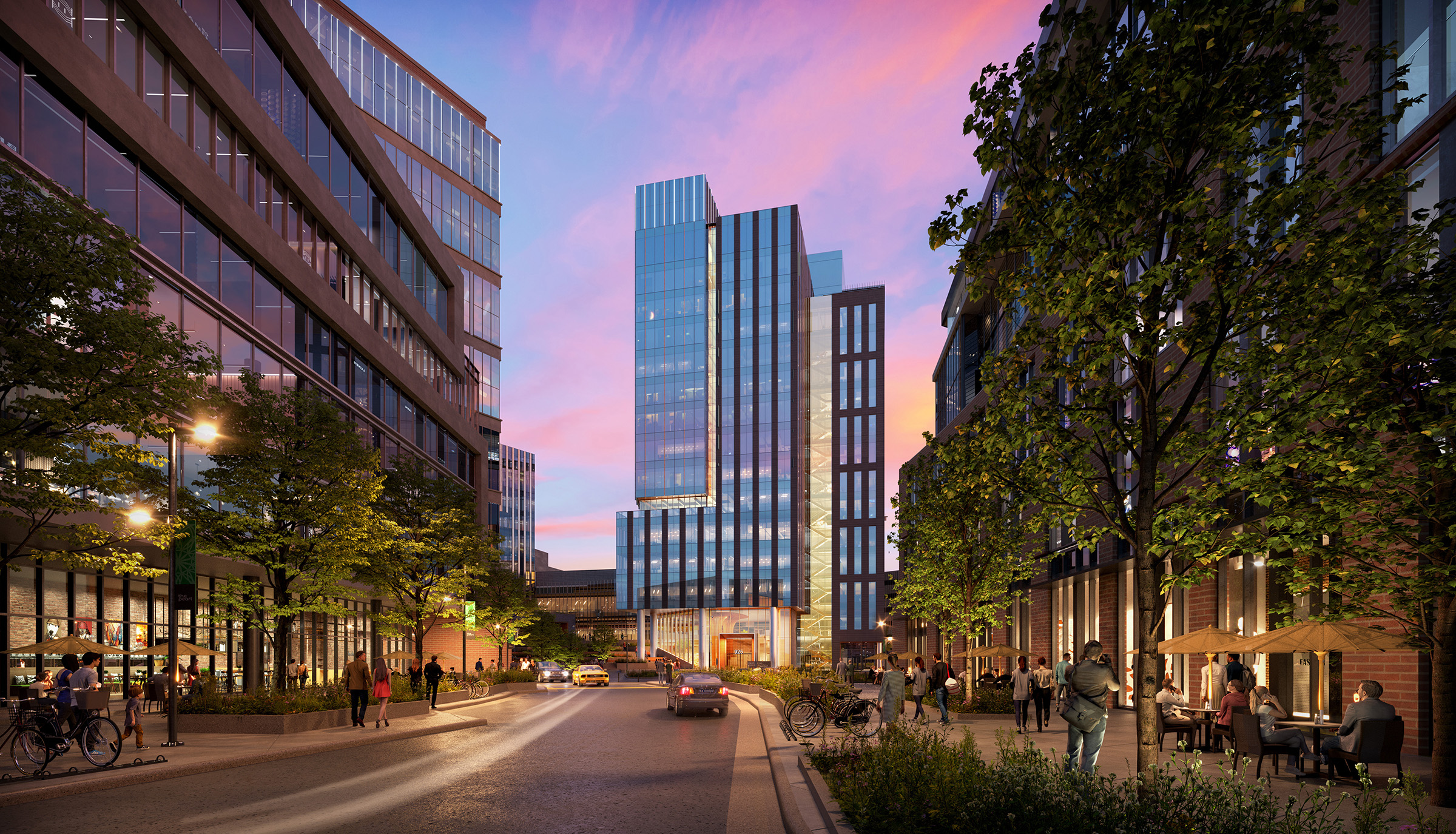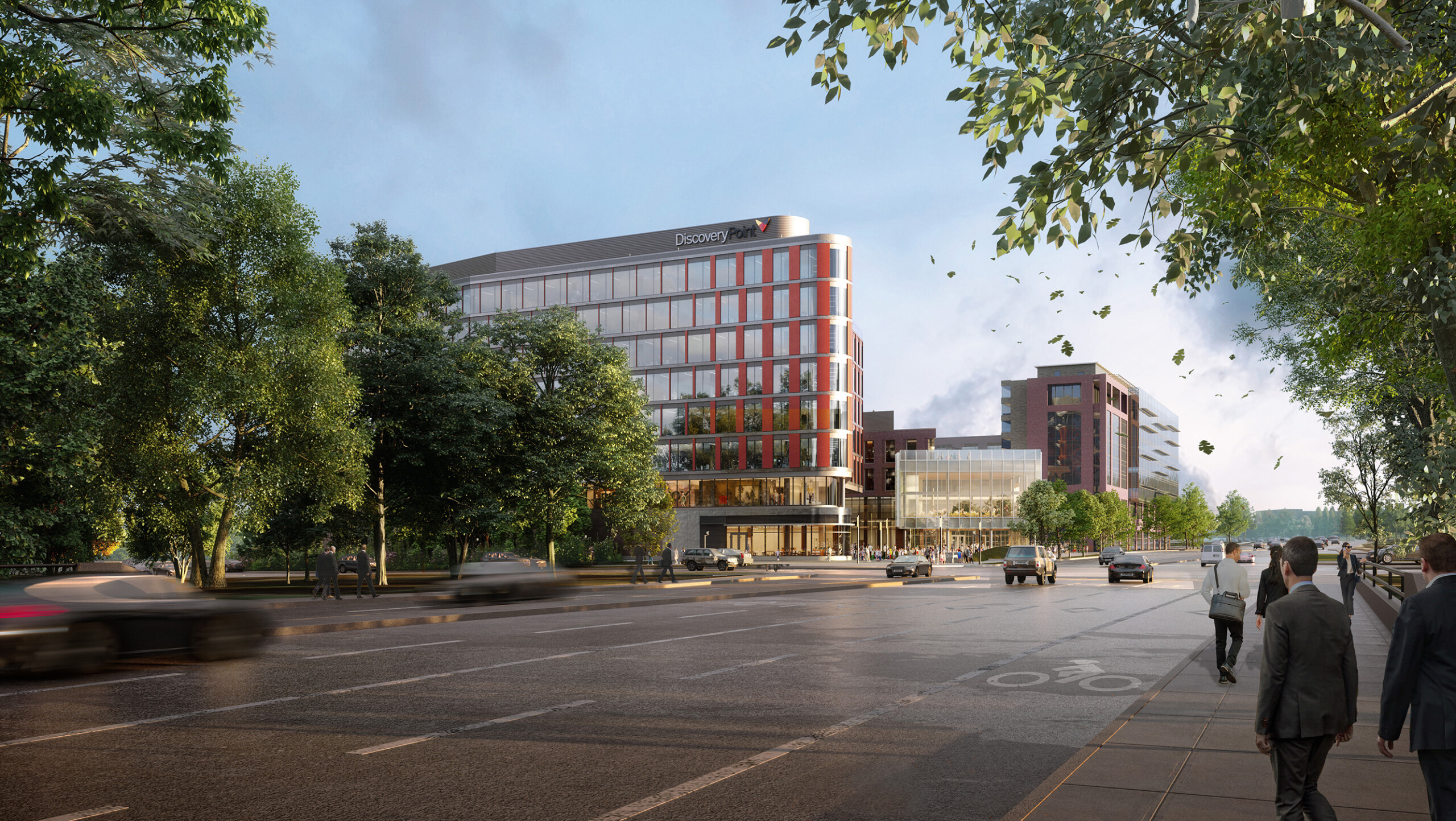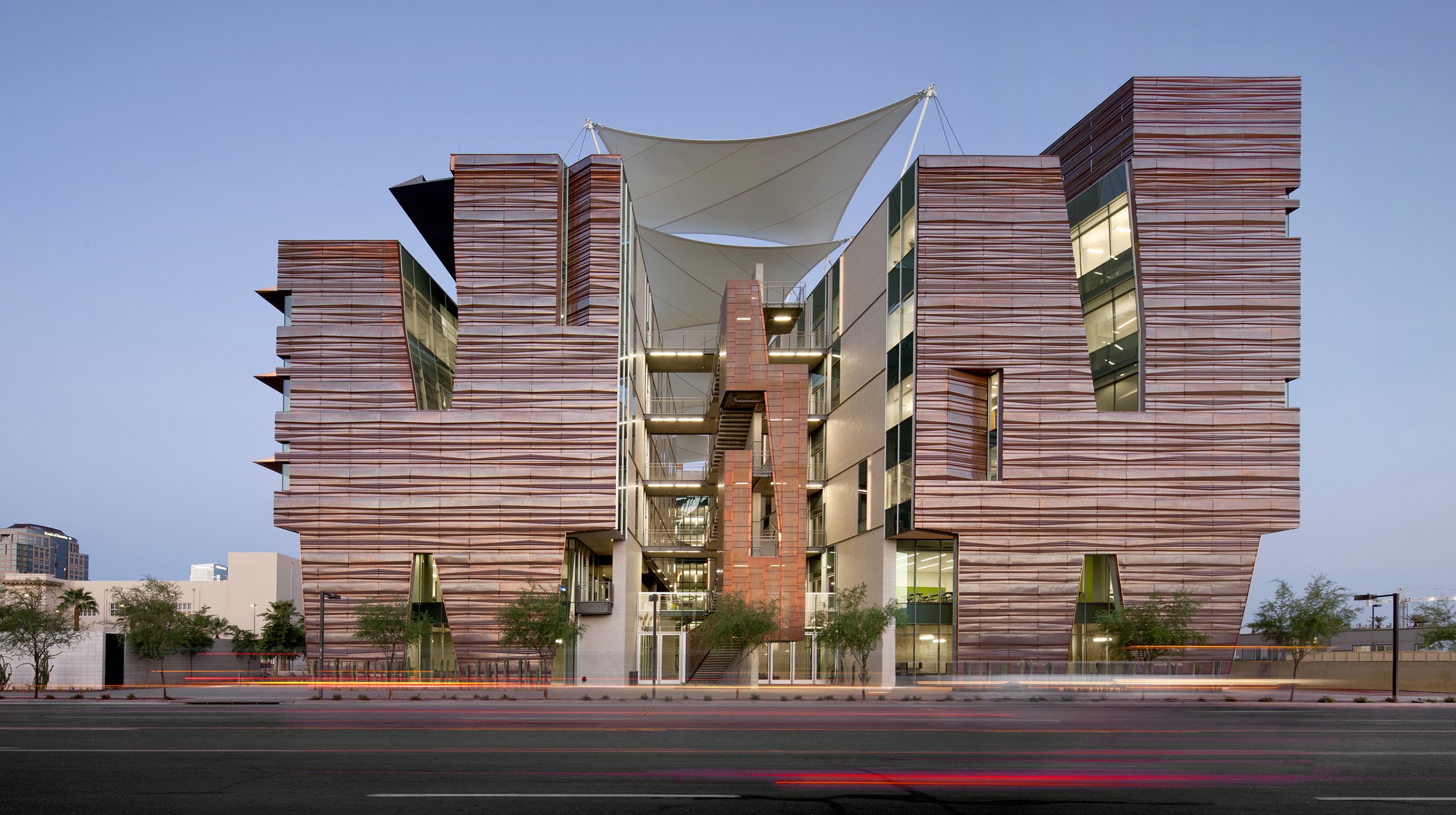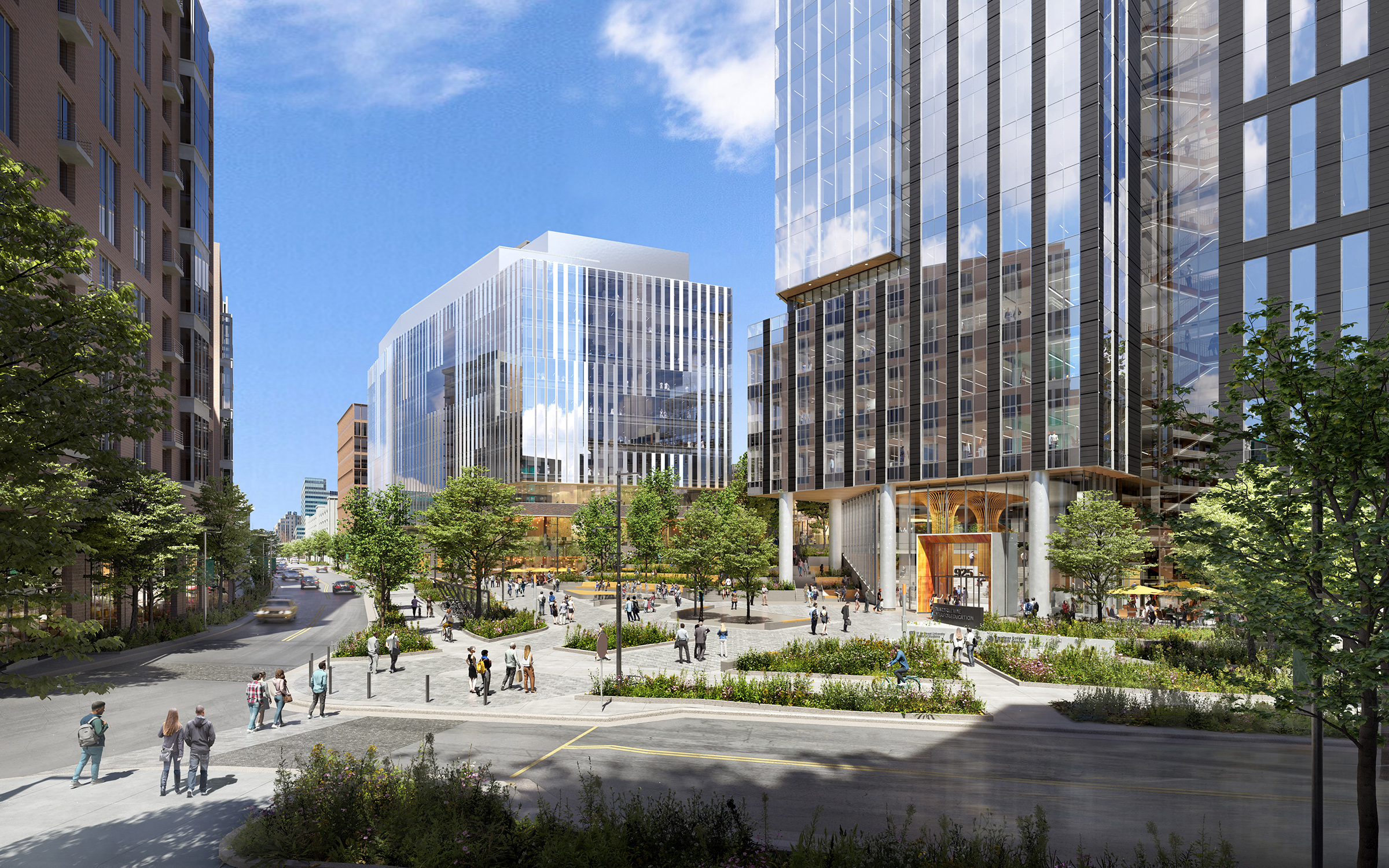Buildings and Public Realm

Innovation buildings and public spaces are powerful investments in emerging research and technologies. These structures make a bold statement to the community as a physical manifestation of future goals.
Easily integrated into existing campuses, these flexible, tech-forward environments are valuable tools for attracting and supporting new talent. They also provide institutions enhanced versatility, accomplishing multiple functions at once.

100 Forge
Situated within the vibrant, amenity-rich Arsenal Yards development, 100 Forge stands as a premier destination for life science research. This cutting-edge, nine-story landmark offers 165,600 GSF of meticulously designed space, evenly divided between laboratories and office areas.
The first floor features an array of shared amenities, including expansive conference rooms, versatile semi-private pods, an inviting outdoor patio, and a dynamic event space with a hydraulic door that connects to a neighboring community park.

Point225
The first building in the Providence Innovation District, Point225, is anchored by Brown University’s School of Professional Studies and the Cambridge Innovation Center, which provides incubator space for start-ups, entrepreneurs, and innovators. Together, these anchor tenants drive innovation and serve as powerful catalysts for research and development.
Open to the public, the ground-floor District Hall offers dynamic meeting spaces designed for collaboration and creative collisions. The building’s facade is crafted to showcase sweeping views of the city, while exterior and interior signage enhances the initial impression of the physical space.

Instructional Laboratory and Innovative Learning Building
Texas A&M University’s Instructional Laboratory and Innovative Learning Building delivers essential instructional labs, design studios, and a maker space to support interdisciplinary STEAM (Science, Technology, Engineering, Arts, and Math) education for undergraduate students.
This state-of-the-art facility features 28 science lab spaces dedicated to the entire lower-division chemistry program, eight interdisciplinary studios for art instruction, an interdisciplinary maker space, and a variety of study areas for students to gather, study, and collaborate. The ILSQ accommodates approximately 8,500 students weekly during core university hours. Each of the laboratories is meticulously designed to foster active learning and enable students to engage in advanced experiments.








